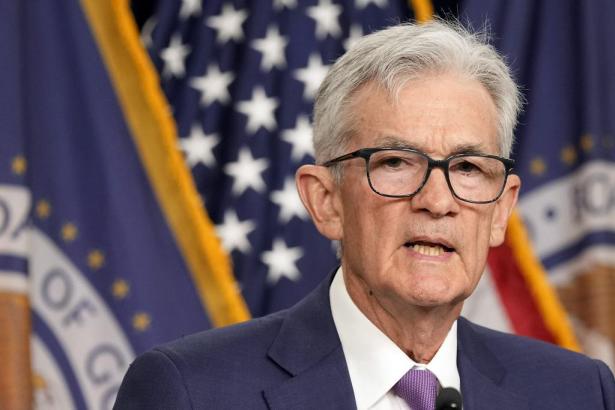The Prospect’s latest series on pricing power, which is the subject of our new issue, is a lesson in how the real economy works. You are invited to read it, and we also hope there’s another audience: the leaders of the Federal Reserve.
The latest numbers on slowing economic growth and moderating inflation suggest that it’s truly time for the Fed to cut interest rates. The Personal Consumption Index, the Fed’s favorite indicator of inflation, rose just two-tenths of 1 percent in April, which translates to an annual rate of just 2.4 percent.
Meanwhile, other key indicators show the economy slowing dramatically. The Commerce Department reported that GDP slowed to an annual rate of just 1.6 percent in the first quarter of 2024, down sharply from 3.4 percent in the last quarter of 2023. Estimates for the second quarter are now around the same range.
The Fed’s obsession with macroeconomic aggregates also fails to take into account one of the most important drivers of price hikes: concentrated corporate power in sectors ranging from drugs to health care to airfares to grocery prices.
Despite the fact that the economy is performing well and inflation is down, President Biden is plagued by the perception of voters that prices at the grocery store are way up. In the short run, grocery prices have indeed moderated. According to the Bureau of Labor Statistics, the prices of foods consumed at home increased just 1.1 percent over the past year. Food prices actually declined two-tenths of 1 percent in April.
But shoppers are thinking of what prices were before the pandemic. And on that basis, prices are through the roof. According to a report by our friends at The Lever, in March 2024, consumers spent 95 percent more for a carton of eggs, 33 percent more for a pound of ground beef, and 22 percent more for a gallon of milk than they did before the pandemic.
Why? It’s not that shoppers are hungrier and bidding up food prices. Nor is it because key foods are in short supply, though some were during the pandemic.
Now that the pandemic is over, the main reason why grocery prices have not come back down is the concentrated pricing power of large food producers and grocery chains. In 2023, for example, according to The Lever, “PepsiCo raked in $91 billion in net revenue, a 35 percent increase over pre-pandemic income. Tyson Foods more than doubled profit margins between 2021 and 2022 after hiking prices for beef, pork, and chicken by upwards of 30 percent.” And as Luke Goldstein’s piece in the Prospect explains today, price-fixing facilitated by a company called Agri Stats has consistently set prices for meat and poultry higher.
So here’s an idea: When Jay Powell’s term as Fed chair ends in 2026, President Biden should extract a commitment from Powell’s successor to create a new research division at the Fed to study price hikes driven by excessive market power and the connection of those price increases to the general rate of inflation. And at least one other member of the Fed’s Board of Governors should be a specialist on market concentration and pricing power. The process could begin with a series of tutorials for the Fed by the FTC, which is already studying the issue. It’s time to bring power into the conversation around pricing.
Robert Kuttner is co-founder and co-editor of The American Prospect, and professor at Brandeis University’s Heller School.
Used with the permission © The American Prospect, Prospect.org, 2024. All rights reserved.
Read the original article at Prospect.org.
Support the American Prospect.
Click here to support the Prospect's brand of independent impact journalism


Spread the word